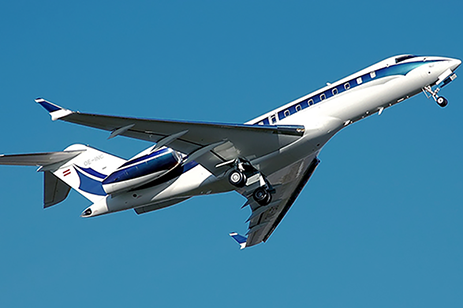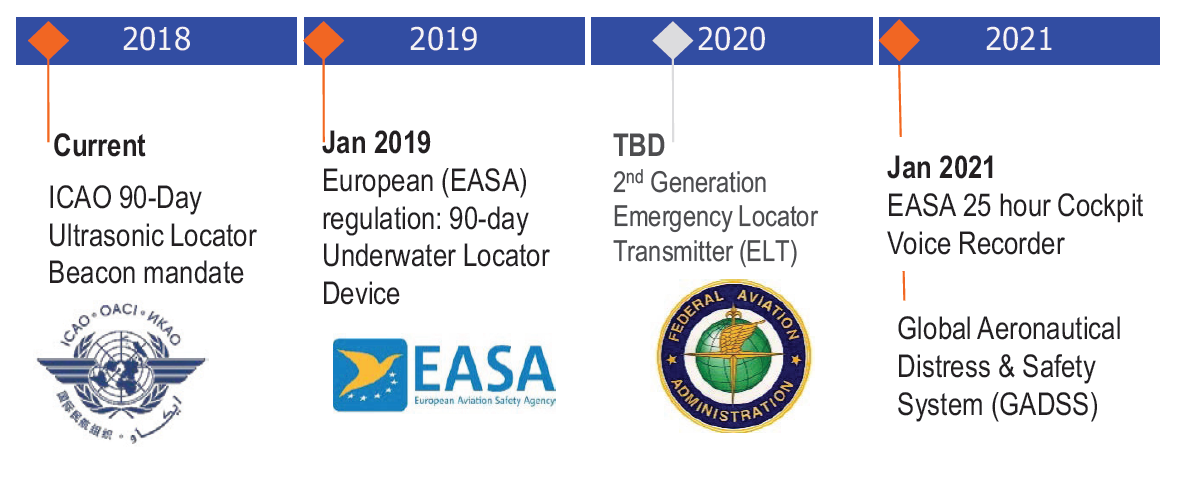
Flight Data Recorders (FDR) help accident investigators determine the reasons for accidents and, in turn, enable authorities to recommend changes to help mitigate future incidents. FDRs are themselves subject to regulations to ensure they can deliver the information needed. FDR regulations have evolved over the years from their inception and they continue to evolve today in response to new technologies and unfortunate incidents that highlight areas for improvement in their design or recoverability.
Regulations Coming Soon
In the next few years, there are three principal regulations – one around underwater locator beacons (ULB), another for lengthening Cockpit Voice Recorder (CVR) duration, and one regarding the tracking system discussed earlier (contained within GADSS).
In 2018, the new ULB must transmit for 90 days. This is an increase from 30 days and was a direct reaction to how long it took to locate the FDR on the AF 447. Larger airliners will need to retrofit older ULBs, although, in time, all aircraft will have 90-day ULBs as 30-day ones are no longer being manufactured.
Similarly, the aircraft tracking recommendations arose from the loss of flight MH370. If such a tracking system was installed, search and rescue teams would have known where to start their search rather than spending some 4 years, at the time of writing, trying to find out what happened.

In the next few years, the regulations being introduced are aimed at more rapidly and reliably locating aircraft and their FDRs
This white paper looks at the history of Flight Data recorders, their regulations, and how these regulations are formulated. It also discusses regulations due in the near term and what the future may bring.
Download the white paper to learn more about:
- Flight Data Recorders (FDR)
- International Civil Standards
- National Regulations
- ED-112A
- GADSS